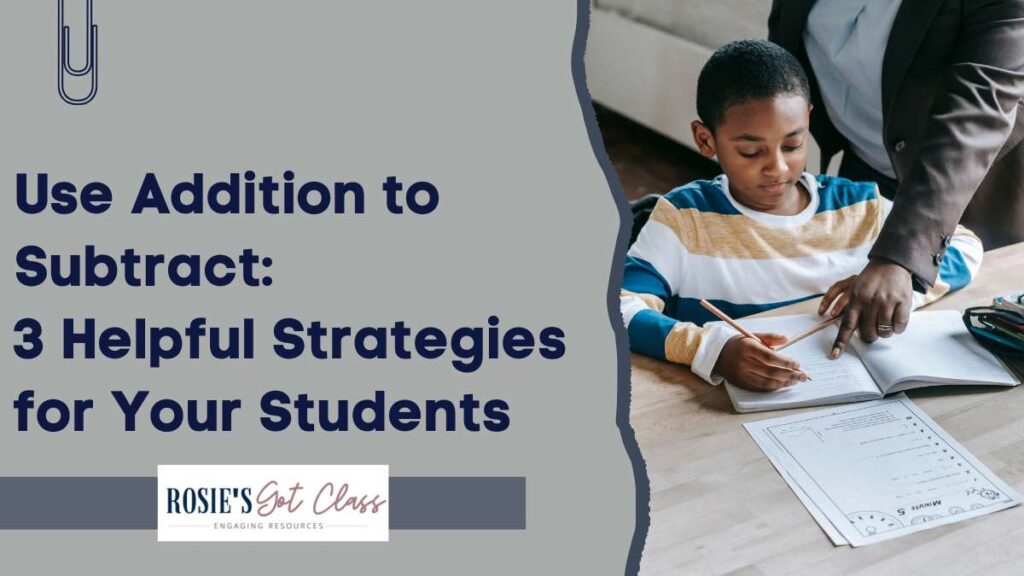
Do you use addition to subtract? It is a powerful tool for teaching subtraction. When we connect these two operations, students build a deeper understanding of math concepts while strengthening their fact fluency. Let’s explore how students can use addition to solve subtraction problems by focusing on three helpful strategies: using known addition facts, using fact families, and using mental math strategies like doubles facts, near doubles facts, and doubles +2 facts. We’ll also touch on questions like, “How does addition help you subtract?” and “What does addition by subtraction mean?”
Before we dive in, what do you use in your classroom to practice math strategies? Students need continued practice to build math fact fluency. Math fact practice doesn’t have to be boring! You can use fun and engaging activities to help your students practice mental math strategies as they practice addition. When students understand addition, it gives them a strong foundation for subtraction. Use this Pet Bingo game in your classroom today! Put your name and email in the boxes and then look in your email for a simple game to help support your students.
Use Addition to Subtract?
Before we talk about the strategies, let’s discuss an important question. What is the relationship between addition and subtraction? Simply put, they’re inverse operations. This means one operation can undo the other. For example, if 7 + 3 = 10, then 10 – 3 = 7 and 10 – 7 = 3. Understanding this relationship is essential for students to see subtraction connected to addition.
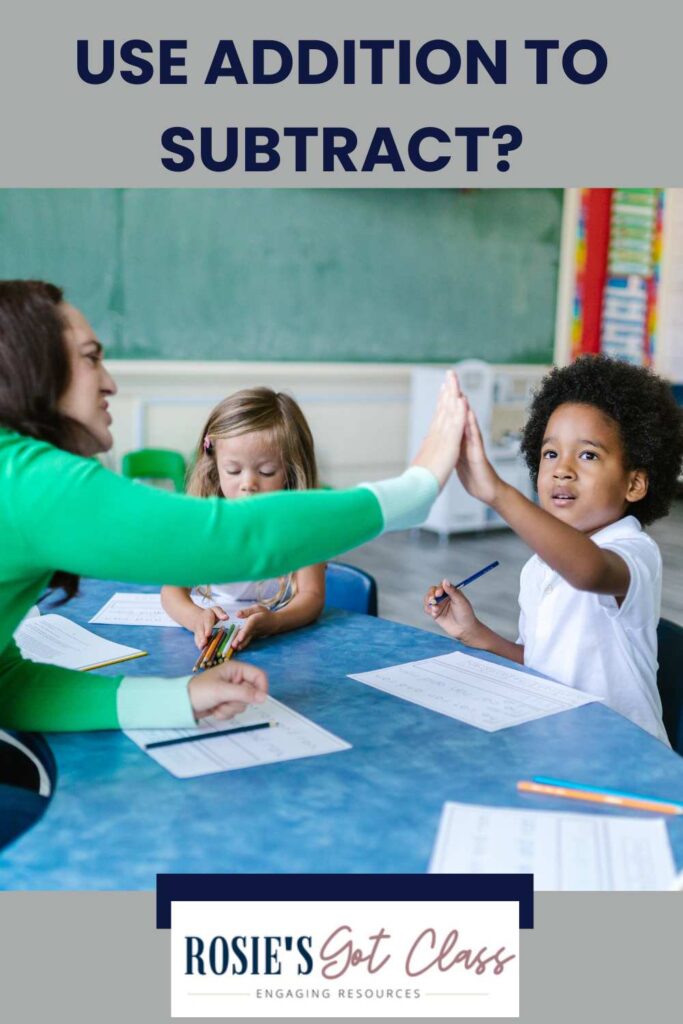
Use Known Addition Facts
When students know their addition facts well, they can flip the script and use these facts to subtract. For example, if a student knows that 8 + 4 = 12, then they can quickly solve 12 – 8 by thinking, “What number do I add to 8 to make 12?” Students can focus on fact recall.
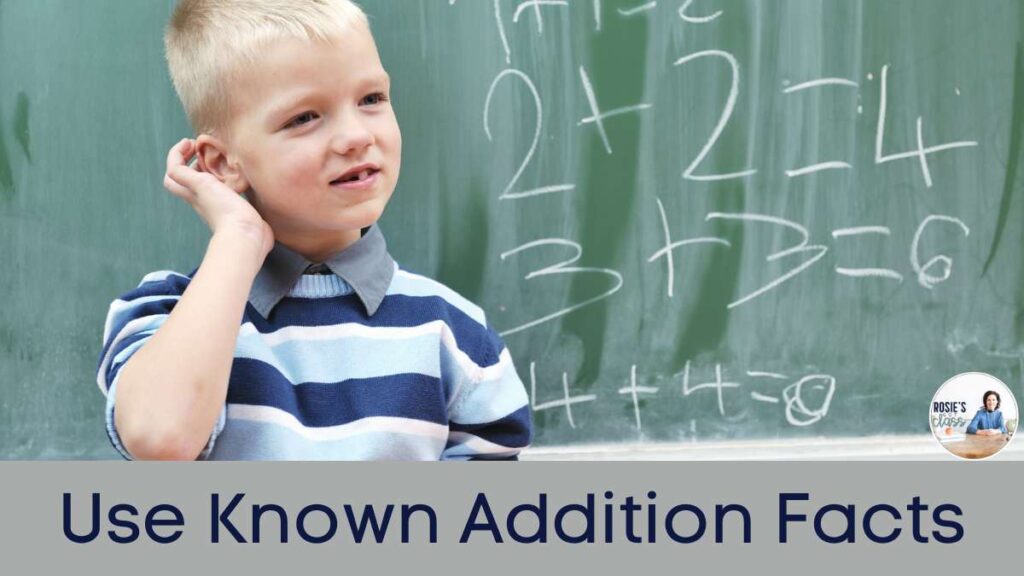
How does addition help you subtract? It’s all about turning subtraction into a “missing addend” problem. Instead of asking, “What is 12 minus 8?” we can reframe it as, “8 plus what equals 12?” This shift in perspective makes subtraction more approachable for many students especially those who are already comfortable with their addition facts.
Use Fact Families
Fact families are groups of related math facts that include both addition and subtraction. For example:
- 6 + 4 = 10
- 4 + 6 = 10
- 10 – 6 = 4
- 10 – 4 = 6
Teaching students to recognize and use fact families will reinforce the idea that addition and subtraction are interconnected. It also helps them see patterns and relationships between numbers which builds number sense.

What does addition by subtraction mean? It means solving a subtraction problem by thinking about its related addition fact. For example, to solve 15 – 7, a student might think, “7 plus what equals 15?” Using the fact family, they can quickly determine the answer is 8.
A fun way to practice fact families is through interactive games or puzzles where students match equations within a family. For example, they might pair 9 – 5 with 5 + 4 or 14 – 9 with 9 + 5.
Use Mental Math Strategies
Mental math strategies are essential tools for solving subtraction problems efficiently. Here are three addition strategies that support subtraction.
Use Doubles Facts: If a student knows that 6 + 6 = 12, they can use this knowledge to solve 12 – 6. Doubles facts are often easier for students to recall because of their symmetry.
Use Near Doubles Facts: For problems like 11 – 5, students can think of 5 + 5 = 10. By recognizing this “near doubles” relationship, they can think that 10 is near 11. Since they need one more to get to 11, they will need to add one to the 5 to get 6. This helps them build their number sense while they solve the problem mentally.
Doubles +2 Facts: For subtraction problems like 16 – 7, students might recall that 7 + 7 = 14 and then add 2 more to reach 16. By understanding doubles +2, students can extend their addition knowledge to tackle more complex subtraction problems.
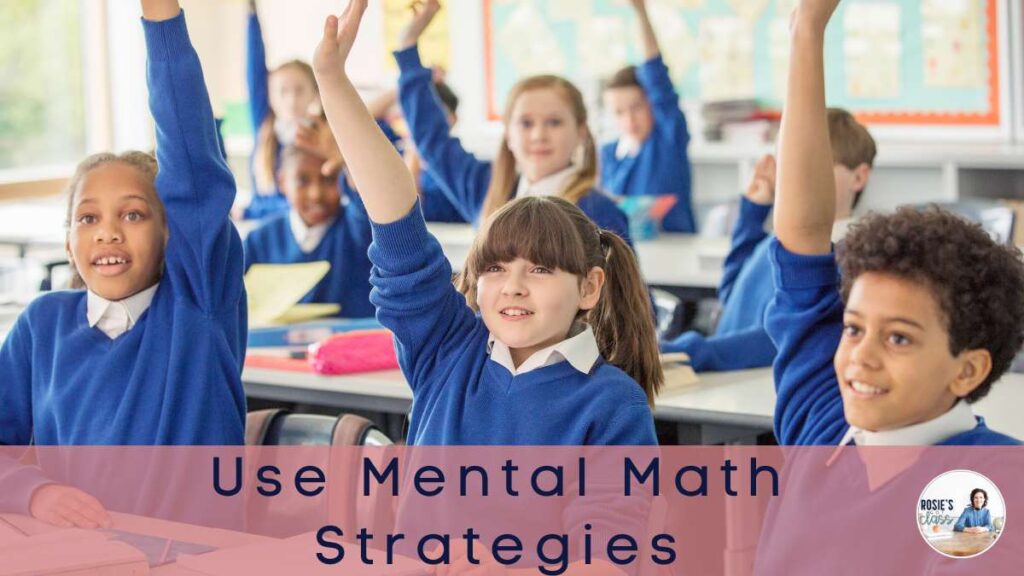
These mental math strategies highlight how to use addition to solve subtraction. By knowing addition, it simplifies subtraction. Instead of subtracting step by step, students can focus on recognizing patterns and relationships which make their problem-solving process faster and more accurate.
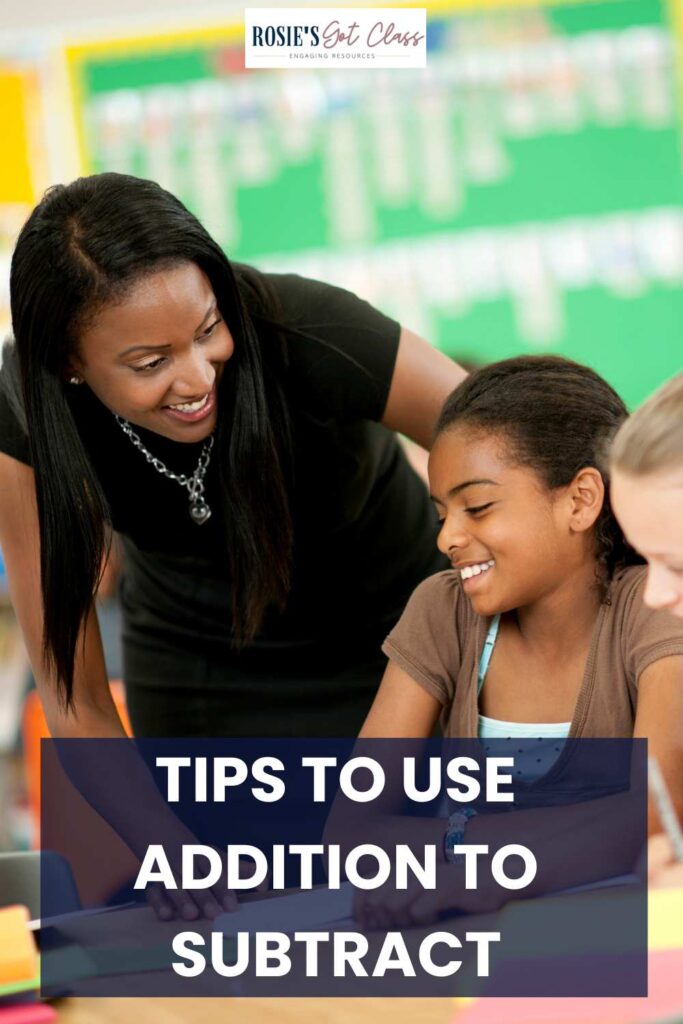
Tips to Use Addition to Subtract
When teaching students how to use addition to solve subtraction, it’s important to provide plenty of practice opportunities. Here are some ideas:
- Hands-On Activities: Use manipulatives like counters, number lines, or ten frames to model addition and subtraction relationships. For example, students can start with 10 counters, remove 4, and then count how many are left. Next, they can reverse the process by adding back 4 to see how it connects to the original total.
- Math Games and Activities: Use engaging games that focus on fact families and mental math strategies. Here are some fun activities that you can use with your whole class, with a small group, or for a math center.
Spin and Play: Students need a game page, a pencil, and a paper clip to use as a spinner. They will have so much fun that they won’t even know they are building their math fact fluency.
Subtraction Roll and Write: Students need to roll a dice, and they answer the question above the number they roll. There are pages for numbers from -1 to -10, and there are also pages for mixed subtraction practice.
Card Game For Addition and Subtraction: Use this game for both addition and subtraction within 20 practice. A card is flipped and then the equation is solved!
Subtraction PowerPoint Spinning Wheels: Do your students need practice to subtract a certain number? This game allows you to choose what number you want your students to practice subtracting and then the fun begins. A PowerPoint wheel is spun, and then your students will subtract that number from the number that was spun. Your class will love it!
Color By Code: Students love to figure out the color code by answering the equations for these subtraction problems. It is no prep for you so everyone wins with this activity!
- Real-Life Scenarios: Incorporate word problems that require students to use addition to solve subtraction. For example, “You baked 12 cookies and ate 5. How many cookies are left? How could addition help you find the answer?”
- Models: Display anchor charts or diagrams that show the connection between addition and subtraction. For example, a chart might feature part-part-whole examples for addition and subtraction. If you know both parts and you are looking for the whole, then it is an addition problem. When you know the whole and one of the parts, it is a subtraction problem.
Why Use Addition to Subtract
By teaching students to use addition to solve subtraction problems, you’re not just helping them with math. You’re fostering a deeper understanding of mathematical relationships and building their confidence in problem-solving. When students understand “What is the relationship between addition and subtraction?” they’re better equipped to tackle more complex math concepts in the future.
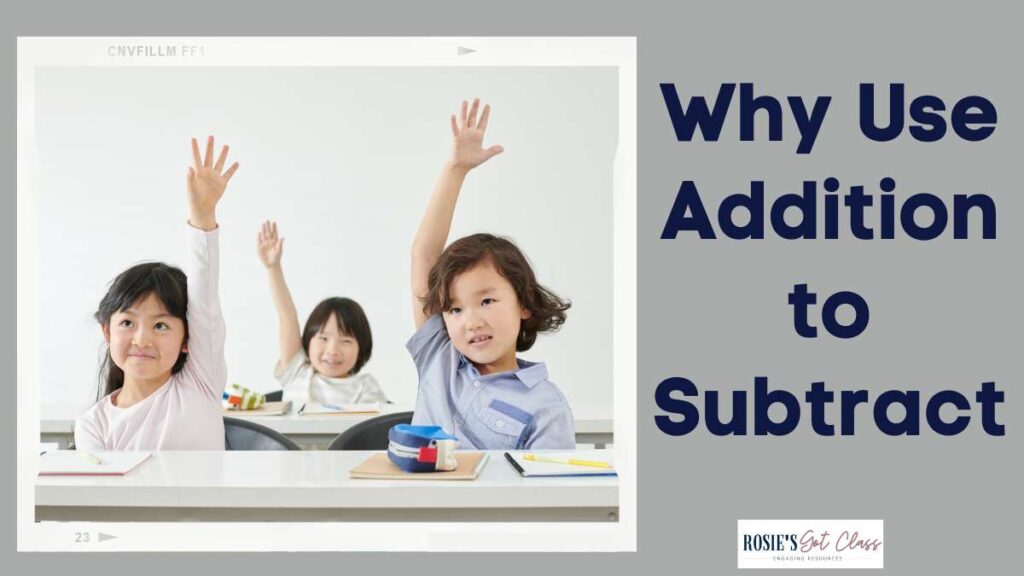
In conclusion, using addition to subtract is a game-changer for young learners. By using known addition facts, fact families, and mental math strategies, students can approach subtraction with greater ease and confidence. Remember to ask your students, “How does addition help you subtract?” or “How to use addition to solve subtraction?” Let them share the strategies they use. Remember, subtraction doesn’t have to be a struggle—it’s just addition in disguise!
Here are some other articles you might find helpful.


